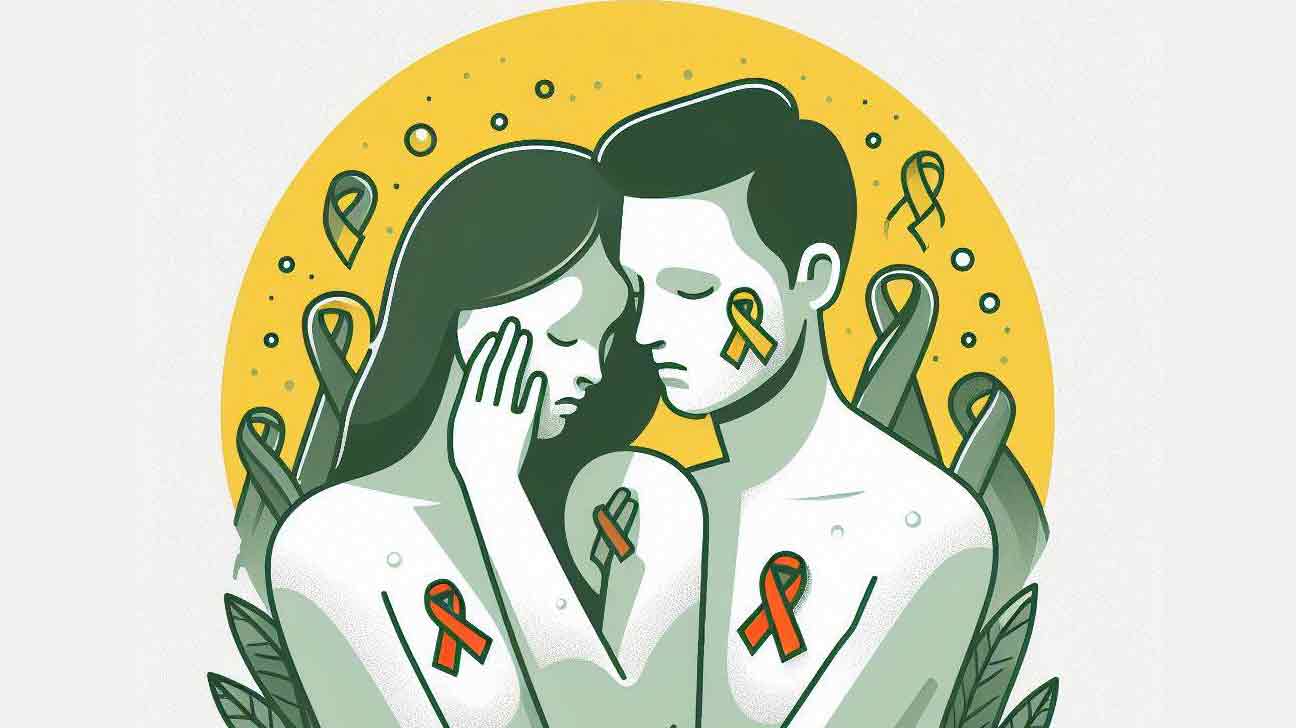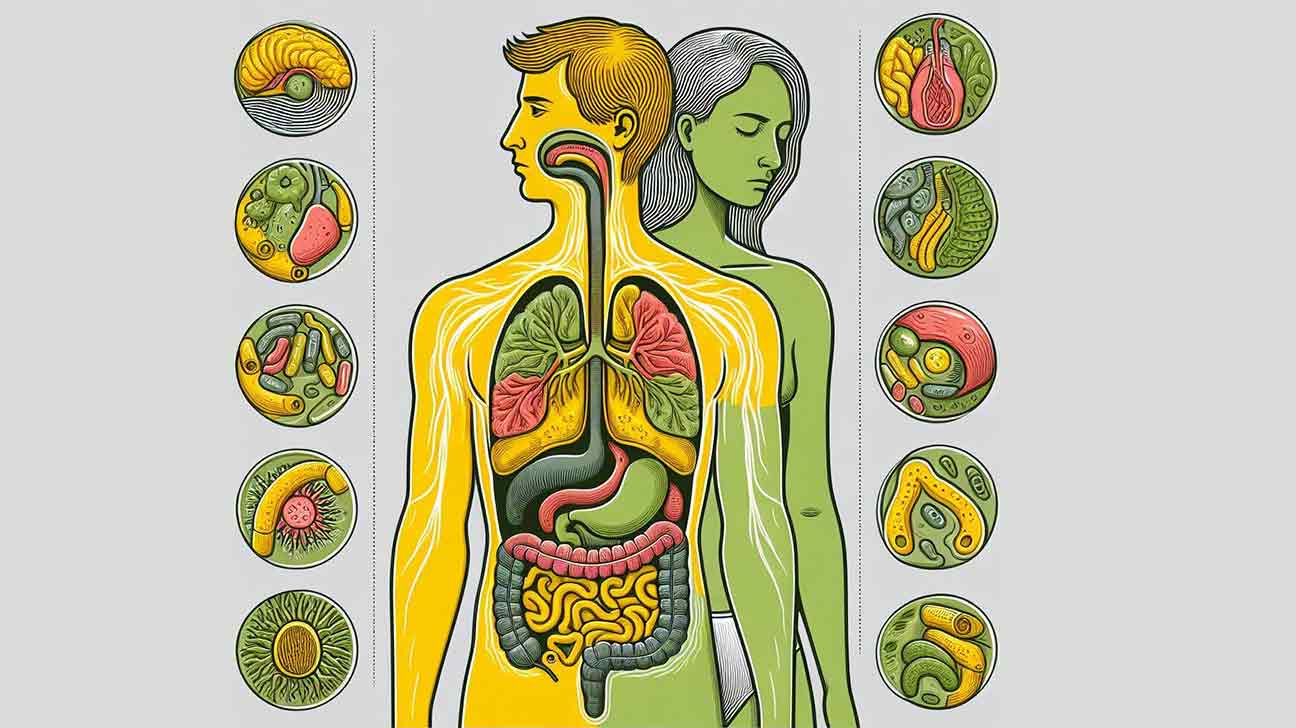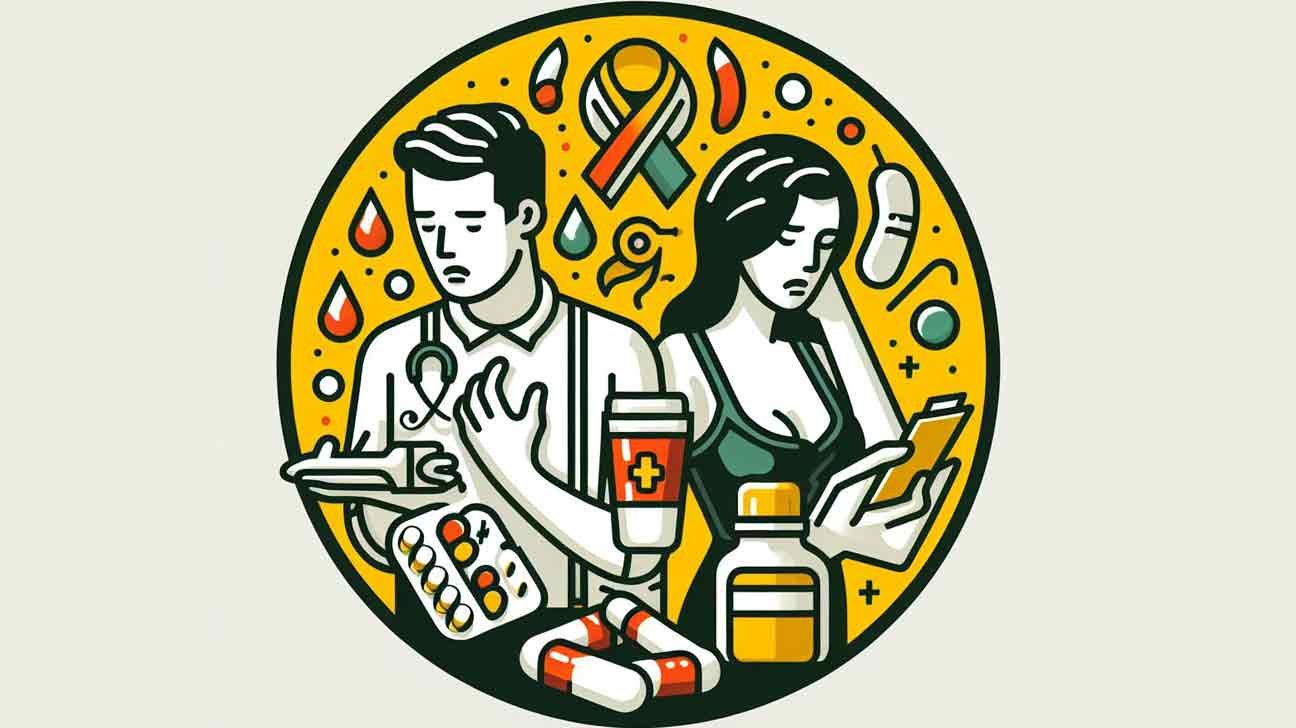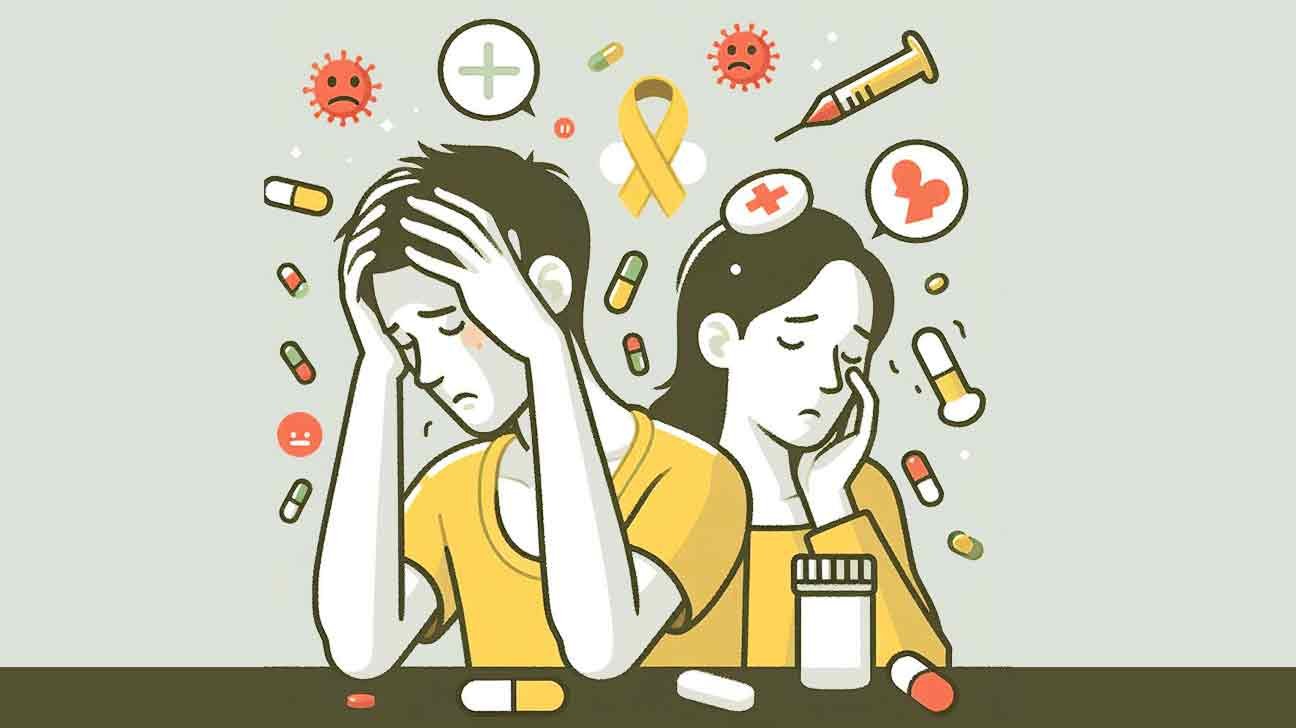
Details Information of Stds
Sexually transmitted diseases (STDs) are infections that are transmitted through sexual contact. These infections can have long-term effects on the body and can lead to more serious diseases if left untreated.
Millions of new infections occur every year in the United States, making STDs a common health concern. They can be caused by viral or bacterial infections and can affect multiple organ systems in the body. STDs can be curable or incurable, depending on the specific infection.
It is important to practice safe sex and get tested regularly to prevent and manage the spread of STDs.
Types Of Stds
Types of STDs can be classified based on the type of organisms that cause them. There are three main categories: Bacterial STDs, Viral STDs, and Parasitic STDs.
Bacterial Stds
Bacterial STDs are caused by bacteria and can generally be treated with antibiotics. The most common bacterial STDs include:
- Chlamydia
- Gonorrhea
- Syphilis
Viral Stds
Viral STDs are caused by viruses and are often chronic, meaning they cannot be cured completely but their symptoms can be managed. Some of the viral STDs are:
- Genital herpes
- Human immunodeficiency virus (HIV)
- Human papillomavirus (HPV)
Parasitic Stds
Parasitic STDs are caused by parasites and can be treated with antiparasitic medications. Examples of parasitic STDs include:
- Pubic lice
- Trichomoniasis
Symptoms Of Stds
Sexually transmitted diseases (STDs) have various manifestations that can indicate their presence:
- Genital itching or burning
- Unusual discharge from the genitals
- Pain or discomfort during urination
Often, STDs may not show any visible symptoms, leading to:
- Silent transmission of the disease
- Difficulty in early diagnosis
- Increased risk of unknowingly spreading the infection
Untreated STDs can result in severe long-term consequences:
- Infertility in both men and women
- Increased vulnerability to other infections
- Higher risk of developing HIV

Transmission Of Stds
Sexually transmitted diseases (STDs) are infections passed through sexual intercourse, including chlamydia, gonorrhea, HIV, and syphilis. Untreated STDs can lead to long-term health issues, affecting fertility and increasing susceptibility to serious conditions like HIV. Regular testing and safe practices are crucial in preventing the spread of STDs.
Sexual Transmission
STDs, or sexually transmitted diseases, are infections that can be transmitted between individuals during sexual activities. Sexual transmission is the most common and well-known mode of spread for STDs. Unprotected vaginal, oral, and anal sex can all contribute to the transmission of various STDs, including chlamydia, genital herpes, gonorrhea, HIV, HPV, syphilis, and trichomoniasis.
It is important to note that infected individuals may not always experience symptoms, and some STDs can be asymptomatic. Therefore, it is essential to practice safe sex and get regular screenings if sexually active.
Non-sexual Transmission
Although sexual transmission is the primary mode of spread for STDs, there are cases where these infections can be transmitted through non-sexual means. For certain STDs like HIV and hepatitis B, non-sexual transmission can occur through blood transfusions, sharing needles or syringes for drug use, or mother-to-child transmission during childbirth or breastfeeding.
It is crucial to be aware of these non-sexual modes of transmission to take appropriate precautions and prevent the spread of STDs in non-sexual contexts as well.
Mother-to-child Transmission
Mother-to-child transmission, also known as vertical transmission, refers to the transmission of STDs from an infected mother to her baby during pregnancy, childbirth, or breastfeeding. Some STDs that can be transmitted from mother to child include HIV, syphilis, and hepatitis B.
Pregnant women with STDs should receive appropriate medical care and treatment to prevent vertical transmission and ensure the health and well-being of their babies. Early detection, regular screenings, and adherence to healthcare professional’s guidance are crucial in preventing mother-to-child transmission of STDs.
Prevention Of Stds
Prevention of STDs is crucial to maintain sexual health. Engaging in safe sexual practices, such as using barrier methods like condoms and getting regularly tested, can help reduce the risk of contracting or spreading STDs. It is important to be aware of the symptoms and seek timely medical assistance if needed.
Safe Sex Practices
Practicing safe sex is an essential step in preventing STDs. Here are some safe sex practices you can adopt:
- Always use condoms: Condoms are effective in reducing the risk of STD transmission. Ensure you use them correctly and consistently during vaginal, anal, and oral sex.
- Limit sexual partners: Having multiple sexual partners increases the risk of contracting STDs. Limiting the number of sexual partners can significantly reduce the chances of infection.
- Communicate with your partner: Open and honest communication about sexual history and STD testing is crucial. Discussing potential risks and getting tested together can help protect both partners.
- Avoid sharing needles: If you use drugs, never share needles or other drug paraphernalia. Sharing needles increases the risk of bloodborne STDs like HIV and hepatitis.
- Get vaccinated: Vaccinations for certain STDs, such as HPV and hepatitis B, are available. Speak to your healthcare provider about the vaccines that are recommended for you.
Regular Testing
Regular testing is an essential component of STD prevention. Here’s why it’s important:
- Early detection: Getting tested regularly allows for early detection and treatment of STDs. Early treatment can prevent the development of complications and further spread of the infection.
- Peace of mind: Knowing your STD status can provide peace of mind and enable you to make informed decisions about your sexual health.
- Prevent transmission: By knowing your status, you can take necessary precautions to prevent transmitting the infection to your partner(s).
- Education and awareness: Testing provides an opportunity to learn more about STDs, their prevention, and ways to protect yourself and others.
Vaccinations
Vaccinations can play a vital role in preventing certain STDs. Here are some common STDs for which vaccines are available:
| STD | Vaccine | Recommended age |
|---|---|---|
| HPV | Gardasil 9 | Starting at age 11 or 12 |
| Hepatitis B | Engerix-B, Recombivax HB | Birth to 18 years old |
It’s important to consult with your healthcare provider to determine which vaccines are recommended for you based on your age, lifestyle, and sexual history.
By practicing safe sex, getting regular testing, and staying up to date with vaccinations, you can significantly reduce your risk of contracting and spreading STDs. Take control of your sexual health and make these preventive measures a priority in your life.
Common Stds
Sexually transmitted diseases (STDs) are very common and can have serious health consequences if left untreated. It is important to be aware of the most prevalent STDs to protect yourself and your partner.
Chlamydia
Chlamydia is one of the most common STDs, caused by the bacterium Chlamydia trachomatis. It can infect both men and women and is often asymptomatic, making it crucial to get tested regularly if sexually active.
Gonorrhea
Gonorrhea is another prevalent STD caused by the Neisseria gonorrhoeae bacterium. Symptoms can include painful urination and discharge. It is important to seek treatment to avoid complications such as infertility.
Syphilis
Syphilis is a sexually transmitted infection caused by the bacterium Treponema pallidum. It progresses in stages and can lead to severe health issues if not treated early. Regular screenings are essential to prevent the spread of syphilis.
Hiv/aids
HIV/AIDS, a serious and life-threatening condition, is caused by the Human Immunodeficiency Virus (HIV). It weakens the immune system, leaving the body vulnerable to various infections and certain cancers.
Overview Of Hiv/aids
HIV/AIDS is a chronic, potentially deadly condition that can be managed with proper medical care. It has significantly impacted global health, with millions of individuals affected worldwide. The virus attacks the immune system, specifically targeting CD4 cells, which are crucial for the body’s ability to fight off infections.
Modes Of Transmission
HIV is transmitted through contact with certain body fluids of a person with HIV, such as blood, semen, vaginal fluids, and breast milk. Unprotected sexual intercourse, sharing needles or syringes, and from mother to child during childbirth or breastfeeding are common modes of transmission.
Treatment And Prevention
While there is no cure for HIV/AIDS, antiretroviral therapy (ART) can effectively control the virus and allow people with HIV to live long and healthy lives. Early diagnosis and treatment, along with safer sexual practices and access to clean needles for injection drug users, are crucial for prevention. Additionally, pre-exposure prophylaxis (PrEP) is a preventive medication for individuals at high risk of acquiring HIV.
Hpv And Genital Warts
Sexually transmitted diseases (STDs) are a growing concern worldwide, and among them, HPV and genital warts are prevalent. Human Papillomavirus (HPV) is a virus that can spread through sexual contact and is the primary cause of genital warts, one of the most common STDs.
Understanding Hpv
HPV is a group of over 150 related viruses, some of which can lead to cancer, including cervical, anal, and throat cancer. Hence, it’s crucial to understand the risks and implications of HPV and how it can lead to the development of genital warts and potentially cancer.
Genital Warts And Cancer Risk
Genital warts are caused by certain types of HPV and appear as growths or lumps around the genital area. While many cases of genital warts are benign, there is a potential risk of developing cancer, especially if the HPV infection persists. Therefore, it’s essential to address HPV and genital warts promptly to mitigate the risk of cancer development.
Vaccination And Treatment
Vaccination against HPV is available and highly recommended, especially for adolescents and young adults. Additionally, treatments for genital warts, such as topical medications, cryotherapy, or surgical removal, can effectively manage the condition and reduce the risk of cancer. Seeking professional medical advice is crucial for proper vaccination and treatment guidance.

Herpes
Herpes: Herpes is a common viral infection caused by the herpes simplex virus. It is categorized into two types: HSV-1 and HSV-2.
Types Of Herpes Viruses
- HSV-1: Primarily causes oral herpes, cold sores, and fever blisters.
- HSV-2: Mainly responsible for genital herpes.
Outbreaks And Transmission
Herpes outbreaks can occur intermittently and are highly contagious. The virus can be transmitted through direct skin-to-skin contact, especially during active outbreaks.
Management And Prevention
Management: Antiviral medications can help alleviate symptoms and reduce the frequency of outbreaks. Maintaining good personal hygiene and avoiding triggers can also aid in management.
Prevention: Practicing safe sex, using condoms, and avoiding contact during outbreaks can reduce the risk of transmission. Regular testing and open communication with partners are crucial for prevention.
Hepatitis
Hepatitis is a sexually transmitted disease (STD) that can have long-term effects on the body if left untreated. It can lead to serious complications such as liver damage and increased vulnerability to other diseases like HIV. It is important to practice safe sex and get tested regularly to prevent the spread of STDs.
Types Of Hepatitis Viruses
Hepatitis is an inflammation of the liver which can be caused by various types of viruses. There are several types of hepatitis viruses, including:
- Hepatitis A (HAV)
- Hepatitis B (HBV)
- Hepatitis C (HCV)
- Hepatitis D (HDV)
- Hepatitis E (HEV)
Transmission And Symptoms
Hepatitis viruses are typically transmitted through contaminated food or water, blood, and sexual contact. The symptoms can vary depending on the type of hepatitis, but common symptoms include:
- Fatigue
- Jaundice (yellowing of the skin and eyes)
- Abdominal pain
- Nausea and vomiting
- Loss of appetite
- Dark urine
- Pale stool
Prevention And Treatment
Preventing hepatitis involves practicing good hygiene, getting vaccinated (where available), and avoiding risky behaviors such as unprotected sex and sharing needles. Treatment options for hepatitis depend on the type and severity of the virus. They may include antiviral medications, rest, and adequate nutrition.
Bacterial Vaginosis (bv)
Bacterial Vaginosis (BV) is a common vaginal infection caused by an imbalance of bacteria in the vagina. It is not considered a sexually transmitted disease, but it can increase the risk of contracting other STDs. BV occurs when the normal balance of bacteria in the vagina is disrupted, allowing harmful bacteria to grow.
Causes And Risk Factors
There are several factors that can contribute to the development of Bacterial Vaginosis. These include:
- Poor hygiene practices
- Sexual activity
- Douching
- Using harsh soaps or hygiene products
- Having multiple sexual partners
- Smoking
- Weakened immune system
Understanding the causes and risk factors associated with BV is important in order to prevent and manage this condition effectively.
Symptoms And Complications
Bacterial Vaginosis can cause a variety of symptoms, although many women with BV may not experience any symptoms at all. Common symptoms include:
- Thin, grayish-white vaginal discharge
- A strong, fishy odor
- Itching and irritation in the vaginal area
- Burning sensation during urination
If left untreated, BV can lead to complications such as an increased risk of contracting other sexually transmitted infections, pelvic inflammatory disease (PID), and complications during pregnancy.
Diagnosis And Treatment
Diagnosing Bacterial Vaginosis involves a physical examination and a laboratory test to examine the vaginal discharge. Treatment options for BV include:
- Antibiotics, such as metronidazole or clindamycin
- Probiotics or vaginal suppositories to restore the balance of good bacteria
- Avoiding certain irritants and practicing good hygiene
It is important to complete the full course of antibiotics prescribed by your healthcare provider, even if the symptoms improve, to ensure the infection is fully cleared.
In conclusion, Bacterial Vaginosis is a common vaginal infection that can cause discomfort and increase the risk of other sexually transmitted infections. Understanding the causes, symptoms, and treatment options for BV can help individuals manage and prevent this condition effectively.
Trichomoniasis
Trichomoniasis is a common STD caused by a parasite, leading to genital inflammation and discomfort. It is curable with medication, making early detection crucial for effective treatment.
Overview Of Trichomoniasis
Trichomoniasis is a common sexually transmitted infection caused by a parasite called Trichomonas vaginalis. It primarily affects the genital area and can be easily transmitted through sexual contact. Infections can occur in both men and women, but women are more likely to experience symptoms.
Symptoms And Complications
– For Women: – Vaginal itching – Abnormal vaginal discharge – Painful urination – Discomfort during intercourse – Lower abdominal pain – For Men: – Discharge from the penis – Burning sensation while urinating If left untreated, trichomoniasis can lead to serious complications such as increased risk of contracting other sexually transmitted infections, premature birth, and increased susceptibility to HIV infection.
Treatment And Prevention
– Trichomoniasis is typically treated with a course of antibiotics prescribed by a healthcare provider. – Preventive measures include practicing safe sex by using condoms, limiting sexual partners, and regular STI testing. – Both partners should be treated simultaneously to prevent reinfection.
Pubic Lice (crabs)
Pubic lice, often referred to as “crabs,” are tiny, parasitic insects that infest the genital area. While not as common as other sexually transmitted diseases (STDs), pubic lice infestations can be distressing and cause intense itching in the affected area. Understanding the nature of pubic lice infestations, their symptoms, transmission, treatment, and prevention is essential for individuals to protect themselves and seek appropriate care.
Understanding Pubic Lice
Pubic lice are tiny, six-legged insects that cling to hair in the genital area and feed on blood. activity, but can also be transmitted through infested clothing, towels, or linens. Pubic lice infestations can occur in the pubic hair, as well as other coarse body hair, including chest hair, armpit hair, and even eyebrows. The presence of pubic lice may cause intense itching and irritation in the affected area.
Symptoms And Transmission
Infestation with pubic lice can lead to symptoms such as itching in the affected area, visible lice or eggs in pubic hair, and bluish spots on the skin. It’s important to note that while pubic lice infestations can cause discomfort, they do not spread disease. However, secondary bacterial infections from scratching can occur.
Treatment And Prevention
Pubic lice infestations can be treated with over-the-counter or prescription medications, such as lotions or shampoos specifically formulated to kill the lice and their eggs. Additionally, infested clothing, towels, and bedding should be washed in hot water and dried on high heat to effectively eliminate any parasites. To prevent pubic lice infestations, individuals should practice safe sexual behaviors, including using condoms during sexual activity, as well as refrain from sharing personal items like clothing, towels, or bedding with others. Regularly checking for the presence of pubic lice or nits in the genital area is also advisable, especially for those who have been in close contact with an infested individual.

Mycoplasma Genitalium
Mycoplasma Genitalium is a type of bacteria that is transmitted through sexual contact. It is considered one of the lesser-known sexually transmitted infections (STIs) but is increasingly being recognized as a significant cause of nongonococcal urethritis, cervicitis, and other reproductive tract infections. It can affect both men and women and, if left untreated, can lead to serious health complications.
Overview Of Mycoplasma Genitalium
Mycoplasma Genitalium is a bacterial STI that can cause inflammation of the urethra in men and cervicitis in women. It is often asymptomatic, making it difficult to diagnose and treat. The prevalence of this STI is increasing, and it is important to raise awareness about its potential consequences.
Symptoms And Diagnosis
Common symptoms of Mycoplasma Genitalium include urethritis, cervicitis, and pelvic inflammatory disease (PID). However, many infected individuals may not exhibit any symptoms.
Treatment for Mycoplasma Genitalium involves the use of antibiotics, such as azithromycin and doxycycline. However, due to the increasing resistance of this bacteria to certain antibiotics, it is essential to seek medical advice for the most effective treatment options. Preventive measures include practicing safe sex, using condoms, and getting regular STI screenings to detect and treat infections early.
Stds list
- Chlamydia
- Gonorrhea
- Syphilis
- Herpes Simplex Virus (HSV)
- Human Papillomavirus (HPV)
- Human Immunodeficiency Virus (HIV)
- Trichomoniasis
- Bacterial Vaginosis (BV)
- Pubic Lice (Crabs)
- Mycoplasma Genitalium
It’s important to note that many STDs may not cause noticeable symptoms, especially in the early stages. Regular testing, safe sexual practices, and communication with sexual partners are essential for preventing and managing STDs.
Conclusion
Sexually transmitted diseases can have long-term effects on the body, including infertility. Untreated STDs can impact multiple organ systems. Remember, prevention and early detection are key to maintaining sexual health. Stay informed, seek medical advice, and practice safe sex for a healthier future.
